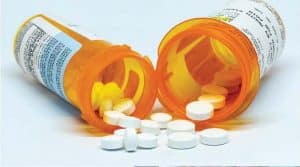Pain Medication: An Answer, or Merely a New Set of Questions?
pioids are best known for their pain-relieving and euphoric effects, but the powerful drugs have a host of side effects. Opioids frequently cause nausea, vomiting, constipation and severe itching. Long-term use can lead to dependence, addiction and numerous physical complications, including overdose and death.
On the website DrugRehab.com, Amy Keller (RN, BSN) lays out the facts. She notes that “opioids are potent drugs that can dull sensations of pain and trigger intense feelings of pleasure. The category includes prescription painkillers and the street drug heroin, all highly addictive. A person can become physically dependent on an opioid drug within a couple of weeks of consistent use.”
Keller notes that “as prescriptions for opioid painkillers have soared over the last two decades, so have rates of opioid addiction. In 2016, more than 42,000 people died from an opioid overdose, and an estimated 2.1 million Americans were addicted to opioids.”
Approximately 40 percent of the 42,249 opioid overdose deaths in 2016 involved a prescription opioid.
An alternative to opioids – when the major issue is inflammation – is the use of Nonsteroidal Anti-inflammatory Drugs (NSAIDs) such as aspirin, ibuprofen and other over-the-counter and prescription pharmaceuticals.
According to a post on drugs.com, “The major side effects of NSAIDs are related to their effects on the stomach and bowels (gastrointestinal system). Some 10%-50% of patients are unable to tolerate NSAID treatment because of side effects, including abdominal pain, diarrhea, and upset stomach.”
In fact, “Approximately 15% of patients on long-term NSAID treatment develop a peptic ulcer (ulceration of the stomach or duodenum.) Even though many of these patients with ulcers do not have symptoms and are unaware of their ulcers, they are at risk of developing serious ulcer complications such as bleeding or perforation of the stomach.”
Manual interventions such as Kinesio Taping provide an alternative free of the habit-forming, addictive and other side effects of these commonly-used medications. As medical science becomes more aware of the beneficial role of skin stimuli, as well as the negative effects of pharmaceuticals ingested through the digestive tract, more and more testing and research is showing promising strategies.
“Kinesio Taping may be useful in stabilizing postoperative wounds.”
In an ongoing study of post-surgical pain, orthopaedic hand surgeon Deana Mercer is examining the extent to which Kinesio Taping may be useful in stabilizing postoperative wounds. Mercer and West have found thus far that while the elasticity of tape gives patients range of motion, the application of Kinesio Tape has a significant pain-relieving effect.
They hypothesize that this illustrates “Gate Control” theory of pain modulation, in which the Kinesio Tape stimulates neuromuscular pathways via afferent feedback, resulting in pain reduction at the neurological level of pain receptors. The use of Kinesio Taping, they hope to confirm, could require less physical therapy to regain normal use of the hand after surgery. ®
Deana Mercer, MD; Amber West, PA-C. Applications of KinesioTaping in Hand Surgery. Department of Orthopaedics & Rehabilitation, University of New Mexico. Kinesio Taping Association International, 31st Research Symposium, Honolulu, Hawaii, October 2017.
Jay W. Marks, MD; Omudhome Ogbru, PharmD. What are NSAIDs and how do they work? https://www.medicinenet.com/nonsteroidal_antiinflammatory_drugs/article.htm#what_are_nsaids_and_how_do_they_work
User Suzanne66.What are the common side effects of NSAIDS? https://www.drugs.com/answers/common-side-effects-nsaids-537878.html
Amy Keller, RN, BSN. Opioid Side Effects. https://www.drugrehab.com/addiction/prescription-drugs/opioids/effects/





